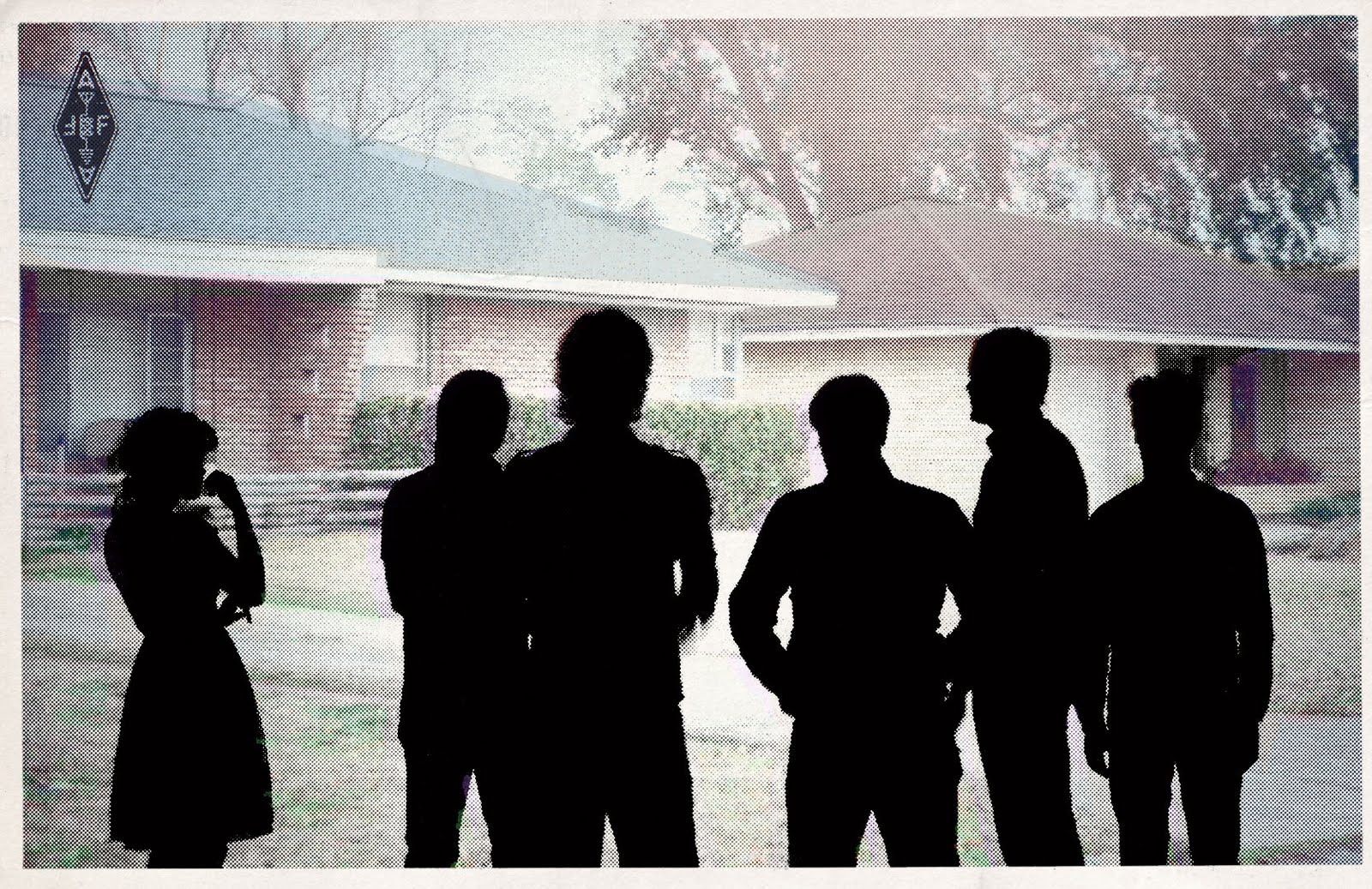
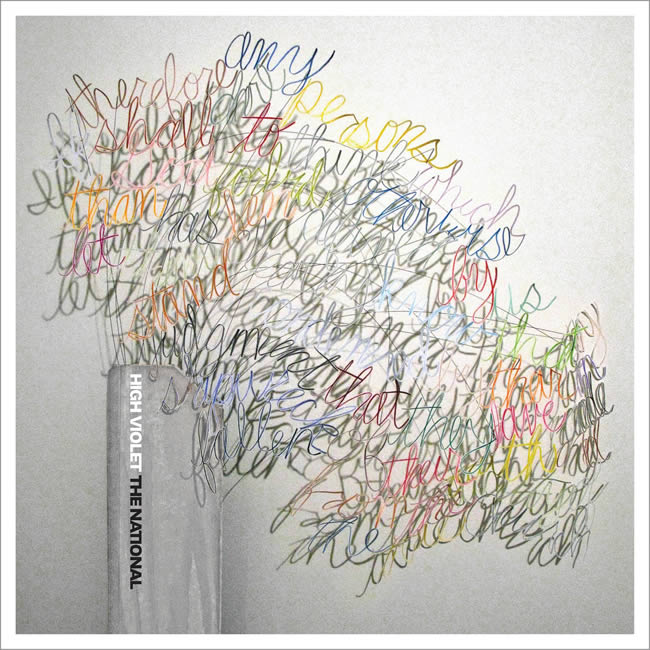
10.
The National
High Violet
[4AD]
The National had a pretty huge year in 2010, becoming the latest in the Arcade Fire/Animal Collective line of indie bands to make the leap from well-liked outsiders to the kind of act that could headline a major festival. A lot of that had to do with their excellent fifth studio album, High Violet. Unlike Interpol, a band that made this jump about a decade ago but whose albums have only grown more ponderous since then, the National seem to get more self-assured with each record. At their core, the National’s songs act as frames for Matt Berninger’s baritone, and on High Violet, their approach is more refined than ever. Coming off a couple of excellent recent albums in Alligator and Boxer, they find power here in musical understatement balancing out their stickiest set of melodies ever, especially “Sorrow,” “Afraid of Everyone,” and “Conversation 16.”
– Sean Highkin

09.
Yeasayer
Odd Blood
[Secretly Canadian]
Who could have expected Yeasayer’s follow-up to All Hour Cymbals to sound like this? In a span of nearly three years between the two albums, they’ve transformed their sound from atmospheric, harmony-laden, Far Eastern, apocalyptic indie rock to a clear and concise, upbeat, amalgamation of electronic dance, funk-rock, and pop, all while remaining as anthemic as ever.
Odd Blood is often compared to last year’s Merriweather Post Pavilion, and not without merit. The two albums share a very similar electronic “water pop” sound at times. But those who dismiss Yeasayer as “a poor man’s Animal Collective” couldn’t be further from the truth. Yeasayer have far greater range and prove so here on Odd Blood.
“Ambling Alp” is the album’s lead single and anthem: it’s trippy, sample-ridden, addictive, and bursting with energy. Yeasayer showcase their slow side with ballad “I Remember,” their sheer pop side with “O.N.E.,” their funk-rock side with “Mondegreen,” and a hint of their original Far Eastern side with the fittingly titled “Strange Reunions.” In under 40 minutes, Yeasayer conquers all of those territories to create a warm and wholesome record, bursting at the stitches with emotion.
– Evan Kaloudis

08.
The Tallest Man On Earth
The Wild Hunt
[Dead Oceans]
In a world where record companies are pushing all sorts of “singer-songwriters” full of trite faux-emotional acoustic songs it’s reassuring to know that there are still some people out there talented enough to actually write a song consisting of purely guitar and vocals that is interesting and genuine. Kristian Matsson, a.k.a. The Tallest Man On Earth, has now produced two albums and a handful of EPs rammed with them. There are several things that set Matsson above the rest: his gravelly vocals, his incredible guitar ability, his passion, and his energy. Lyrically on The Wild Hunt he evokes landscapes which could be culled from his memories of his native Sweden or just as easily conjured from his imagination. The recording of The Wild Hunt sounds raw, especially when he’s singing about love; each song breathes naturally, there is an undoubted belief behind every word he sings and across the record there are several moments of genuine unbridled emotion, including one in “You’re Going Back” which must go down as 2010’s best use of an expletive in music.
– Rob Hakimian
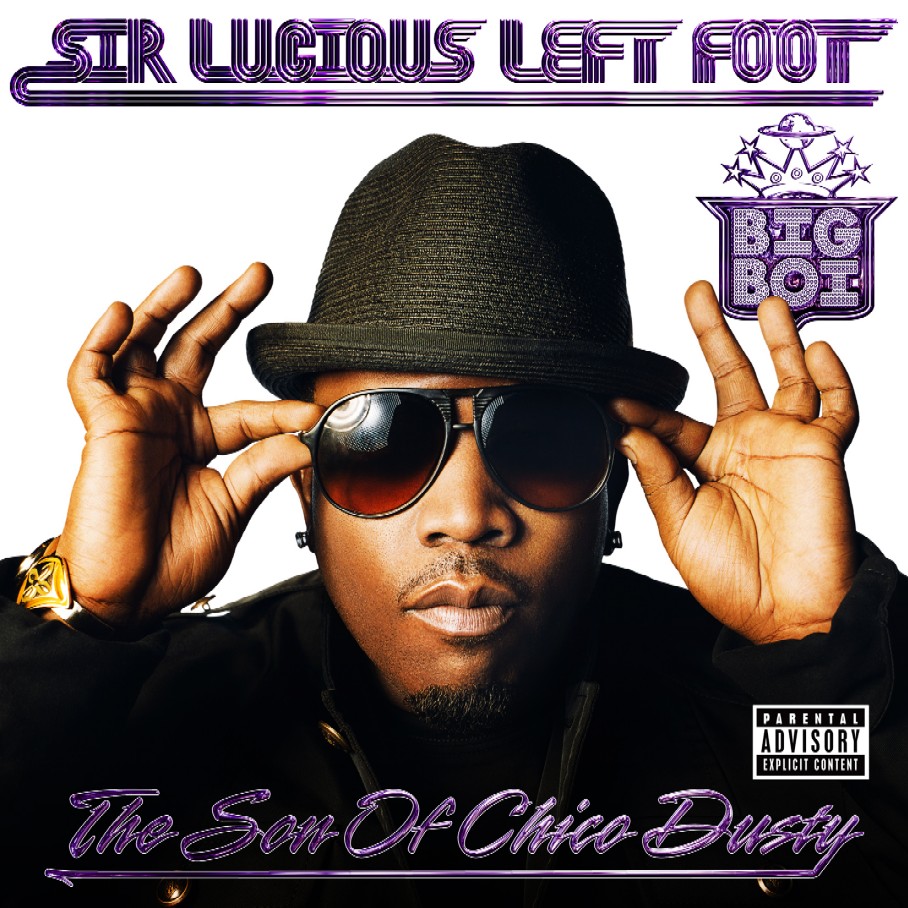
07.
Big Boi
Sir Lucious Left Foot: The Son of Chico Dusty
[Def Jam]
Before Kanye dropped a bomb on us called My Beautiful Dark Twisted Fantasy, Big Boi had a shot at the year’s greatest (and kind of weird) hip-hop album. But what else did you expect from a guy whose dream is to work with Kate Bush? Sir Lucious Left Foot might even take some notes from Kate’s underappreciated album The Dreaming, sharing complicated arrangements and, above all, texture. There’s the sample-based vocoder intro in “Shutterbugg,” which is what it must sound like to pop bubbles made of chrome. There’s the dense track “Tangerine,” which combines guitar, an extremely fat beat, and something that sounds kind of like a harmonica being sampled and arranged in rather strange way. Even with his slightly arty sensibility, rest assured that Big Boi, ever the hype-crazed ATLian, still made an album to make you “shake that ass” above everything else.
– Arika Dean
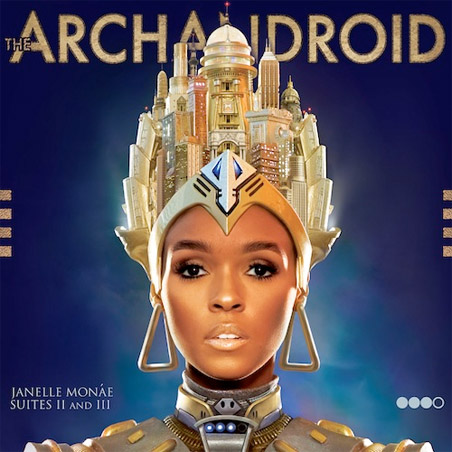
06.
Janelle Monae
The ArchAndroid: Acts II and III
[Bad Boy / Wondaland Arts Society]
This Big Boi protégé came out of freaking nowhere with the year’s best debut album. Armed with one of the most perfect set of pipes you’ll ever come across in contemporary R&B, Monáe is boundlessly inventive, and never lets up throwing different tricks at you on The ArchAndroid. Crucially, she never sounds out of her depth no matter what she’s doing, whether it’s the Big Boi-assisted funk workout “Tightrope,” the haunting ballad “Say You’ll Go,” the fuzzed-out psychedelia of “Mushrooms & Roses,” the electro-pop of “Wondaland”–it goes on. Supposedly, The ArchAndroid is a concept album about robots, but that doesn’t even matter—the music is the real story here. The ArchAndroid is one of those albums with so much creativity and so many unconventional approaches that you get the sense Monáe could barely contain it all when she was recording it. But rather than make the album sound disjointed, this overabundance of ideas actually works to her benefit and establishes her instantly as someone to watch.
– Sean Highkin

05.
Flying Lotus
Cosmogramma
[Warp]
Steve Ellison, also known as Flying Lotus, flipped the script on what avant-garde hip-hop could be with Cosmogramma. He did this by stepping away from making music similar to Madlib and J Dilla and moving more towards crafting his own genre. While his previous album, Los Angeles, was full of tracks that stood on their own, Cosmogramma flows and blends together like a vast, cosmic collision of live jazz improvisation and carefully constructed electronica. Ellison is the great nephew of Alice Coltrane, so it’s no wonder that this album is heavily jazz-influenced. As for the electronic side of the equation, Ellison draws influence from a whole slew of subgenres, including drum n’ bass and dubstep. While the album is almost entirely instrumental, three of the songs showcase the vocals of Thom Yorke, Thundercat and Laura Darlington, respectively. Cosmogramma is a profound dose of innovation and originality, which in today’s world can be tough to find. It’s something that shouldn’t be missed.
– Nicholas Preciado
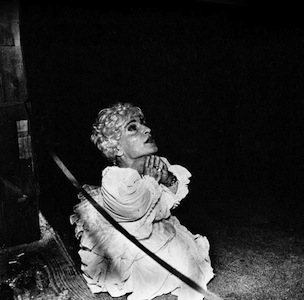
04.
Deerhunter
Halcyon Digest
[4AD]
On previous releases, Deerhunter had been writing and recording as if hidden from the world, making big sounds to fill small spaces and adding lyrical content that documented a loathing for the outside world. With those brilliant albums, they found themselves pushed closer and closer to the limelight, and on Halcyon Digest they’ve decided to a certain extent to grasp this opportunity and put out their most accessible record to date. In person, Bradford Cox is one of the most jovial and talkative people you’re likely to meet, either on stage or off, which is at odds with the loner neurotic that inhabited his music. That side of him is still evident here on songs like “Sailing” and “Basement Scene,” but the record is dominated by a new outgoing side, demonstrating more upbeat and infectious melodies and dabbling with new instruments such as the saxophone. The cleaner, more polished songs are likely to find the band a lot of new fans and have certainly allowed guitarist Locket Pundt to step up from second fiddle and turn in two of the album’s finest numbers “Fountain Stairs” and the particularly beautiful and hypnotic “Desire Lines.” Despite these new developments in their sound, the basic facets of what make Deerhunter great – the melodies, the walls of dreamy guitars (though admittedly more restrained here) and the introspective vocals – are all still intact. Here they have merely tweaked their sound to stay interesting and have proved once again that they are the band to watch in the current indie world.
– Rob Hakimian
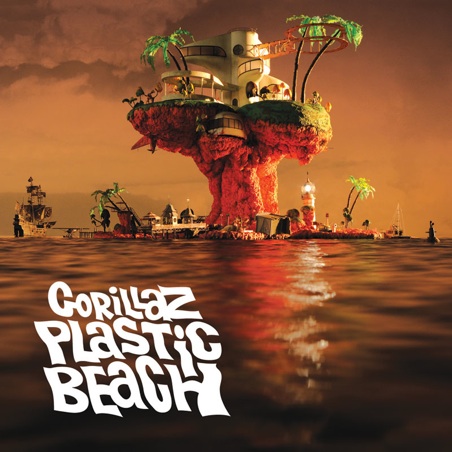
03.
Gorillaz
Plastic Beach
[Parlophone / Virgin]
Plastic Beach is a sprawling musical landscape that relies on the listener to get lost in the world Damon and company have created. Unlike past Gorillaz albums that had stand alone singles, Plastic Beach is a record where all the songs have to be listened together as a whole in order for maximum appreciation. Not the kind of album that goes over well with a generation obsessed with singles and chopping up albums into playlists. And this is really the catch: Either you can buy into the world of Plastic Beach and go along for the ride, or the album will come across as tedious without any major singles spread throughout. Considering that Gorillaz has been known, in part, for the characters and their massive singles, it seemed like a strange choice to opt out for an album more concerned with atmosphere than hooks, but the pay off is worth it. Plastic Beach might not be as catchy and straight forward as Demon Days, but it succeeds in allowing Damon Albarn and his collaborators to fully tap into their creativity. The brilliant thing about Gorillaz is that the cartoon characters actually allow the artists to do whatever they want. There is no sense of expectation. Gorillaz can be whatever they want to be. For the first time, it feels like the creators behind the Gorillaz fully took advantage of this. From the Lebanse National Orchestra-fused-with-rap anthem “White Flag” to the piano romp with Lou Reed, the album goes where it wants to. On paper, the Gorillaz have always sounded like they could have been a disaster. However, Albarn takes all the bits and pieces and is able to create something magical. Plastic Beach is no exception.
– Brent Koepp
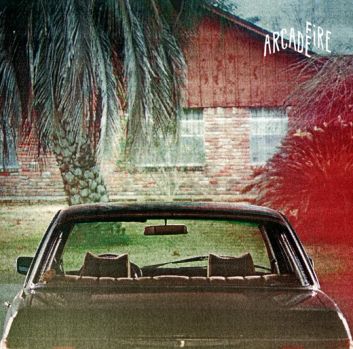
02.
Arcade Fire
The Suburbs
[Merge]
Montreal indie superband Arcade Fire’s third studio album is as sprawling as the faceless community its lyrics depict, but The Suburbs never loses focus. Elements of the sweeping epics of Funeral and the more direct Springsteenisms of Neon Bible are still there, but The Suburbs is their most diverse effort yet, drawing on everything from Harvest-era Neil Young to Depeche Mode’s synth-pop. Win Butler mostly abandons the politically-charged approach of Neon Bible, but these songs are personal in a different way than Funeral’s were. That album was written following several deaths in his and his bandmates’ families, while the lyrics of The Suburbs can be related to any such upbringing. For every stadium-ready anthem (“Ready to Start,” “Rococo,” “We Used to Wait”) there are a few hushed ballads, more than on any previous Arcade Fire release. The Suburbs feels long, but not in a dragged-out way. Rather, the group has created a gorgeous and, above all, replayable portrait of their ability to adapt to a way of growing up that was too small for their ambitions.
– Sean Highkin

01.
Kanye West
My Beautiful Dark Twisted Fantasy
[Roc-a-Fella]
It took two break-ups, the passing of his mother, a highly publicized event at the VMAs, and a long trip away from America, but we finally have Kanye’s masterpiece.
It’s true. He didn’t do it without help. No, he called up everyone he wanted to work with and flew them out to Hawaii. Yes, you read that right, Hawaii. Jay-Z, Kid Cudi, Nicki Minaj, Rick Ross, Pusha T, RZA, Pete Rock… the list goes on. And who could forget Justin Vernon of Bon Iver? If you had told us that Justin Vernon would be featured on three tracks from Kanye’s upcoming album a year ago, we would have wondered if Kanye had reached a whole new level of insanity and had recorded an acoustic guitar record in a cabin in Wisconsin.
But as incredulous as it all sounds, Yeezy managed to bring out the best of everyone and capture it on record. The result: My Beautiful Dark Twisted Fantasy, the best rap album since Jay-Z’s original Blueprint. But it’s more than that. It transcends the genre of rap and even plays out like a prog-rock album with songs dragging out for as long as nine minutes without losing steam.
All the while, we see Kanye at his highest and lowest, a culmination of both his proudest and most vulnerable moments from the past three years. On “Runaway” ‘Ye questions why he is the way he is, and why he ruins every relationship. On “Power” he goes on a self-fufilling ego trip that has him taking shots at his “haters.” We even see Kanye touching on political and societal issues.
On “Who Will Survive In America?,” Kanye samples Gil Scott-Heron’s profound “Comment #1,” a poem seems to be more relevant today than it did in 1970. Heron reiterates the closing line “Who will survive in America?” with such fervor that it forces us to ask the question ourselves.
If Kanye West can’t, then what chance do we have?
– Evan Kaloudis

